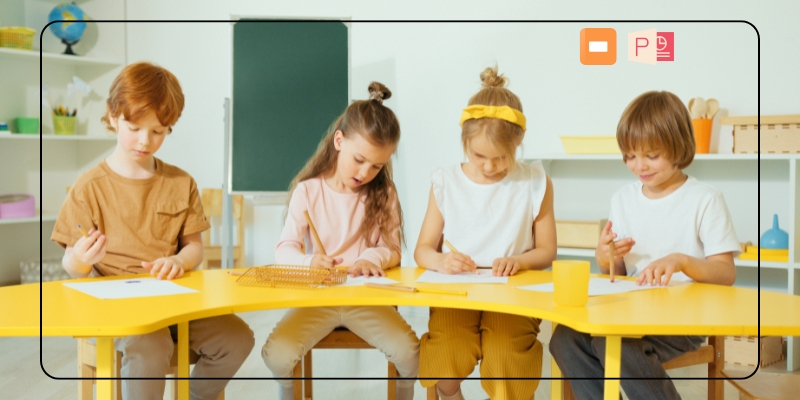
Debugging Activities for Kids with LEGO® Education SPIKE™ Prime
Technology and coding can be unpredictable. Programs don’t always work as expected, and fixing errors—known as debugging—is a crucial skill for young programmers. The LEGO® Education SPIKE™ Prime lesson Out of Order teaches students how to identify and correct mistakes in a program, ensuring a delivery cart functions properly. This lesson is one of the most engaging debugging activities for kids, helping them develop critical problem-solving skills. Let’s explore how this lesson works and why it’s valuable for students in grades 6-8.
Lesson Breakdown
This SPIKE™ Prime Out of Order lesson turns students into coding detectives, challenging them to sharpen their problem-solving skills by debugging a delivery cart’s program. It’s a hands-oan adventure in logic and perseverance, where fixing code means bringing a robot’s mission to life.
1. Preparation
Before the lesson, students should read the material in the LEGO® Education SPIKE™ App. This gives them an idea of what to expect and prepares them for the debugging activity.
2. Engage (5 minutes)
Start with a discussion to get students thinking about troubleshooting. Ask questions like:
- How do you fix a broken bicycle?
- What do you do when a phone update fails?
- How do you check your work in math problems?
By relating debugging to real-life situations, students understand its importance. Debugging activities for kids are not just about programming; they apply to daily life, from fixing an appliance to troubleshooting a Wi-Fi connection.
3. Explore (15 minutes)
Students work in pairs to build a delivery cart using the SPIKE™ Prime set. They run the given program and observe the issues. The cart does not move as intended because the program contains bugs. Their task is to identify these problems. This step fosters teamwork, analytical thinking, and attention to detail.
4. Explain (5 minutes)
Students share their methods for finding errors. This encourages teamwork and discussion on problem-solving strategies. They can also compare different debugging techniques, such as checking each line of code or using trial and error.
5. Elaborate (15 minutes)
Students work on the second programming stack, making a list of all the bugs they find. Then, they attempt to fix them. They also create a new program to make the cart follow a different path. To avoid errors, they document every step. This process reinforces the importance of keeping track of coding changes and learning from past mistakes.
6. Evaluate
Teachers assess students based on their ability to:
- Identify bugs in the program.
- Fix errors efficiently.
- Document modifications clearly.
A simple brick-based self-assessment system helps:
- Blue: Found some bugs.
- Yellow: Fixed all bugs.
- Violet: Fixed all bugs and documented them well.
Students can also give peer feedback using the same color system. Peer evaluation helps develop communication and collaboration skills, which are vital in any career.
Building Tips
The delivery cart moves in a unique way. It has two Medium Motors for forward and backward motion, and a Large Motor at the back for steering. This design makes it slightly unpredictable, adding to the debugging challenge. Encouraging students to experiment with different solutions fosters creativity and resilience.
Taking the Lesson Further
Simplify the Lesson
- Conduct the activity in larger groups.
- Guide students to the errors they need to fix.
Challenge Students
- Create “problem cards” with different debugging tasks.
- Arrange the problems from easy to hard.
- Introduce time constraints to simulate real-world debugging under pressure.
Integrating Other Subjects
Language Arts
Students improve writing skills by:
- Creating a checklist for coding verification.
- Adding clear comments in their programs.
- Writing a reflection on their debugging experience.
- Documenting step-by-step debugging processes, similar to technical writing in professional fields.
Math
Debugging is similar to solving math problems:
- Identify the incorrect step.
- Review the entire process.
- Fix the mistake logically.
- Apply debugging to real-world math problems like algebraic equations and logic puzzles.
- Use data analysis to track errors and improvements over multiple attempts.
Career Connections
This lesson introduces students to careers in:
- Engineering: Understanding mechanics and programming.
- Digital Media: Learning how to troubleshoot software.
- Automotive Technology: Debugging vehicle systems.
- Robotics: Designing and testing automated machines.
- Cybersecurity: Identifying and fixing security vulnerabilities in programs.
- Game Development: Debugging is a crucial skill for game designers and programmers.
- Artificial Intelligence (AI) and Machine Learning: Understanding how to refine and debug AI algorithms.
The Importance of Debugging
Debugging activities for kids help students develop patience, logical thinking, and persistence. When they debug their code, they learn how to analyze problems critically and find solutions—an ability that extends beyond the classroom. Understanding debugging also prepares students for future careers where problem-solving is key.
Moreover, debugging encourages a growth mindset. Students learn that making mistakes is not a failure but an opportunity to improve. This mindset is essential in technology and innovation-driven fields.
The Out of Order lesson helps students develop critical thinking, problem-solving, and teamwork skills. Debugging is a key skill in programming, and this hands-on activity makes learning fun and engaging. By the end of the lesson, students not only fix their delivery cart but also gain confidence in tackling coding challenges. Through debugging activities for kids, they learn that mistakes are just stepping stones toward mastery. This lesson also provides a foundation for real-world problem-solving, making it a valuable addition to any STEM curriculum.










Recent Comments